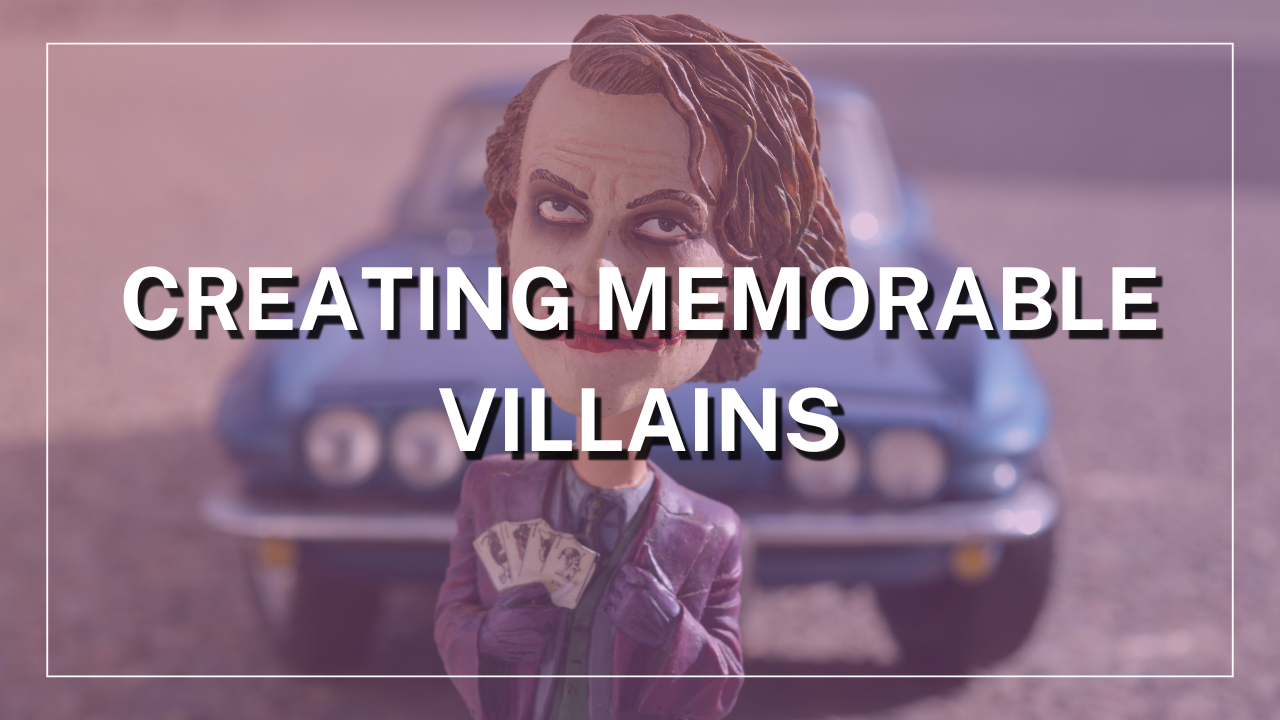In fiction, the most important character after the hero is the villain. After all, what’s a hero without a villain? So, it’s important to craft the character of the villain really well to make the story interesting.
Here are some tips to create a memorable villain in your story.
1. Backstory: The villain should have a realistic and sympathetic backstory to make the reader understand them. Make them a good parent in the past, give them a huge loss that alters their brain chemistry or make their story pitiful to the readers. Let the readers understand the villain. The readers might be repulsed by their actions but will understand the reason behind why they did something.
This can be seen in Draco Malfoy from the “Harry Potter” series, where his environment compels him to side with the Dark Lord.
2. Complex Character: The villain should be powerful by either intelligence, manipulative tactics, or playing mind games rather than money and manpower. This will help in the protagonist’s character development as well. Let them be evil incarnate. Make their actions so disgusting that even a tragic backstory won’t be able to justify it. Such traits will make the villain more interesting. Let them compel the hero to make difficult decisions where they get their way.
You can see the traits of the Joker, where he was able to force Batman to make hard choices and question his own morals.
3. Commitment: Make the villain committed to their goal. Let them do anything and everything to get their way. They should be able to get what they want by any means. They should be so motivated that nothing can cause them to rethink their actions. The villain should give the readers a huge emotional reaction to their actions. The villain should be as unhinged about their goal as the hero.
Milady from the “Three Musketeers” is a great example of this, who would convince a lot of people throughout the story to do her bidding. This includes John Felton, a stoic and religious man, who she eventually convinces to kill the Duke of Buckingham.
4. Inner Conflicts: Write plots where the villain is deeply conflicted by their own actions yet continues with their motives. Let the villain have a mental breakdown due to their actions, but show how they hide that inner conflict in front of everyone. Let them face losses yet continue being villains. Let them confess their conflicts and still be portrayed as bad people.
In Dostoevsky’s “Crime and Punishment”, Raskolnikov’s inner conflict over his murder leads to paranoia and breakdowns. He hides his distress, confesses his crime, but remains a villain.
5. Hide the Villain: Let the villain’s character be anonymous. The readers would know there is a villain yet wouldn’t be able to identify them till the very end. Hide the villain in plain sight. Make their existence known but unidentified. This will raise the curiosity of the reader and make them more interested in the villain. Let the villain slowly creep into the story, so that the readers realise that the villain was always there.
A great example of this could be Big Brother from “1984”. This particular villain isn’t given an identity, whether it’s a group of people or a single mastermind, creating curiosity till the end of the story.
In conclusion, a good villain is supposed to be able to take a story to the next level by being capable of creating conflict and tension. They oppose the protagonist driving them to develop and change the narrative. A good villain also keeps readers interested, excited or worried about the outcome of the story — emotionally invested in the process.

